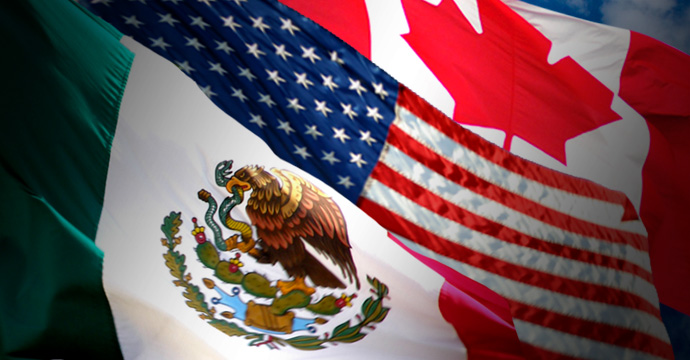
Importaciones y exportaciones temporales y definitivas
05/08/2019General rules of foreign trade
20/08/2019The North American Free Trade Agreement is a global agreement that establishes the rules for international trade and investment between Canada, the United States, and Mexico.
NAFTA entered into force on January 1, 1994, signed by Brian Mulroney, Canadian Prime Minister, George Bush, President of the United States, and Carlos Salinas de Gortari, President of México.
Main objectives of NAFTA
![]() Better conditions of trade between the three countries.
Better conditions of trade between the three countries.
![]() Remove barriers to trade.
Remove barriers to trade.
![]() Facilitate cross-border movement of goods and services.
Facilitate cross-border movement of goods and services.
![]() Promote conditions of fair competition.
Promote conditions of fair competition.
![]() Increase investment opportunities.
Increase investment opportunities.
![]() Provide protection and enforcement of intellectual property rights.
Provide protection and enforcement of intellectual property rights.
![]() Resolving trade disputes and implementing a framework for greater trilateral, regional and multilateral cooperation.
Resolving trade disputes and implementing a framework for greater trilateral, regional and multilateral cooperation.
U.S. President Donald Trump prefers that the renegotiation of NAFTA cease to be a trilateral pact, to become bilateral and have an agreement with Mexico and another with Canada.
On 27 August 2018, it held a renegotiation of NAFTA, which lasted one year, removing key obstacles affecting the United States and Mexico.
Although Trump wants to reach bilateral agreements with Canada and Mexico, both countries have stood firm in maintaining and signing only one trilateral agreement.
Although there is still no formal free trade agreement between the United States and Mexico, a pact has been established between the two countries on how to resolve key problems in their trade relationship as part of the NAFTA talks.
Among the agreements that have been carried out between the US and Mexico, which used to be most important to solve they are:
 Sunset clause
Sunset clause
President Trump intended that NAFTA expire every 5 years unless the three countries prorogued that provision, this in order to have a renegotiation that would achieve better terms in their favor.
 Automotive industry
Automotive industry
Mexican automotive industry has been among the sectors most benefited since NAFTA began, but now could be affected by an increase in the rule of origin; although there is still no established mechanism could change tariffs for some automakers.
Among the key points made so far and pending finalization and implementation are digital commerce, intellectual property, rule of origin for exports.






